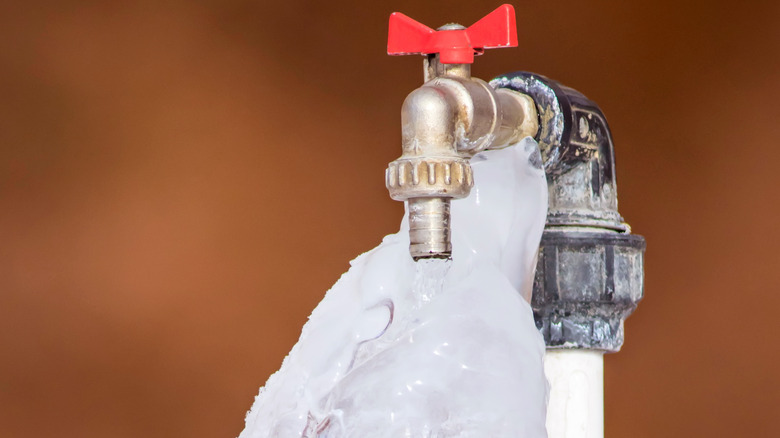Tips to Safeguard Plumbing System from Freezing: Key Advice
Tips to Safeguard Plumbing System from Freezing: Key Advice
Blog Article
Just about every person seems to have their own individual conception with regards to Winter Plumbing Precautions: Preventing Frozen Pipes.

Winter can damage your pipes, particularly by freezing pipelines. Here's exactly how to stop it from taking place and what to do if it does.
Introduction
As temperatures decline, the threat of icy pipelines rises, possibly causing costly fixings and water damage. Comprehending just how to prevent icy pipelines is crucial for house owners in cool climates.
Prevention Tips
Shielding at risk pipes
Wrap pipes in insulation sleeves or make use of warmth tape to shield them from freezing temperature levels. Focus on pipes in unheated or external locations of the home.
Heating methods
Keep interior rooms sufficiently warmed, especially areas with pipes. Open up closet doors to enable warm air to distribute around pipes under sinks.
Exactly how to recognize icy pipelines
Look for decreased water flow from taps, uncommon smells or noises from pipes, and visible frost on exposed pipelines.
Long-Term Solutions
Architectural changes
Take into consideration rerouting pipelines away from exterior wall surfaces or unheated areas. Add added insulation to attics, basements, and crawl spaces.
Updating insulation
Buy high-quality insulation for pipelines, attics, and walls. Proper insulation assists maintain constant temperature levels and lowers the risk of icy pipes.
Protecting Exterior Plumbing
Garden tubes and outside taps
Separate and drain garden hoses prior to wintertime. Mount frost-proof faucets or cover outdoor faucets with protected caps.
Recognizing Icy Pipelines
What creates pipes to freeze?
Pipes ice up when revealed to temperatures below 32 ° F (0 ° C) for prolonged durations. As water inside the pipes freezes, it broadens, taxing the pipeline wall surfaces and possibly creating them to break.
Risks and problems
Frozen pipelines can cause supply of water disruptions, residential property damages, and expensive repair work. Burst pipes can flooding homes and cause extensive architectural damages.
Signs of Frozen Pipes
Determining frozen pipelines early can avoid them from rupturing.
What to Do If Your Pipes Freeze
Immediate activities to take
If you think icy pipes, keep faucets open to relieve stress as the ice melts. Use a hairdryer or towels taken in hot water to thaw pipelines slowly.
Final thought
Stopping frozen pipelines requires aggressive measures and fast reactions. By recognizing the causes, indications, and preventive measures, house owners can protect their plumbing during winter.
5 Ways to Prevent Frozen Pipes
Drain Outdoor Faucets and Disconnect Hoses
First, close the shut-off valve that controls the flow of water in the pipe to your outdoor faucet. Then, head outside to disconnect and drain your hose and open the outdoor faucet to allow the water to completely drain out of the line. Turn off the faucet when done. Finally, head back to the shut-off valve and drain the remaining water inside the pipe into a bucket or container. Additionally, if you have a home irrigation system, you should consider hiring an expert to clear the system of water each year.
Insulate Pipes
One of the best and most cost-effective methods for preventing frozen water pipes is to wrap your pipes with insulation. This is especially important for areas in your home that aren’t exposed to heat, such as an attic. We suggest using foam sleeves, which can typically be found at your local hardware store.
Keep Heat Running at 65
Your pipes are located inside your walls, and the temperature there is much colder than the rest of the house. To prevent your pipes from freezing, The Insurance Information Institute suggests that you keep your home heated to at least 65 degrees, even when traveling. You may want to invest in smart devices that can keep an eye on the temperature in your home while you’re away.
Leave Water Dripping
Moving water — even a small trickle — can prevent ice from forming inside your pipes. When freezing temps are imminent, start a drip of water from all faucets that serve exposed pipes. Leaving a few faucets running will also help relieve pressure inside the pipes and help prevent a rupture if the water inside freezes.
Open Cupboard Doors
Warm your kitchen and bathroom pipes by opening cupboards and vanities. You should also leave your interior doors ajar to help warm air circulate evenly throughout your home.

I came across that piece of writing about Prevent Frozen Pipes when surfing the search engines. Do you know someone else who is excited about the niche? Be sure share it. I value your readership.
Click Here Report this page